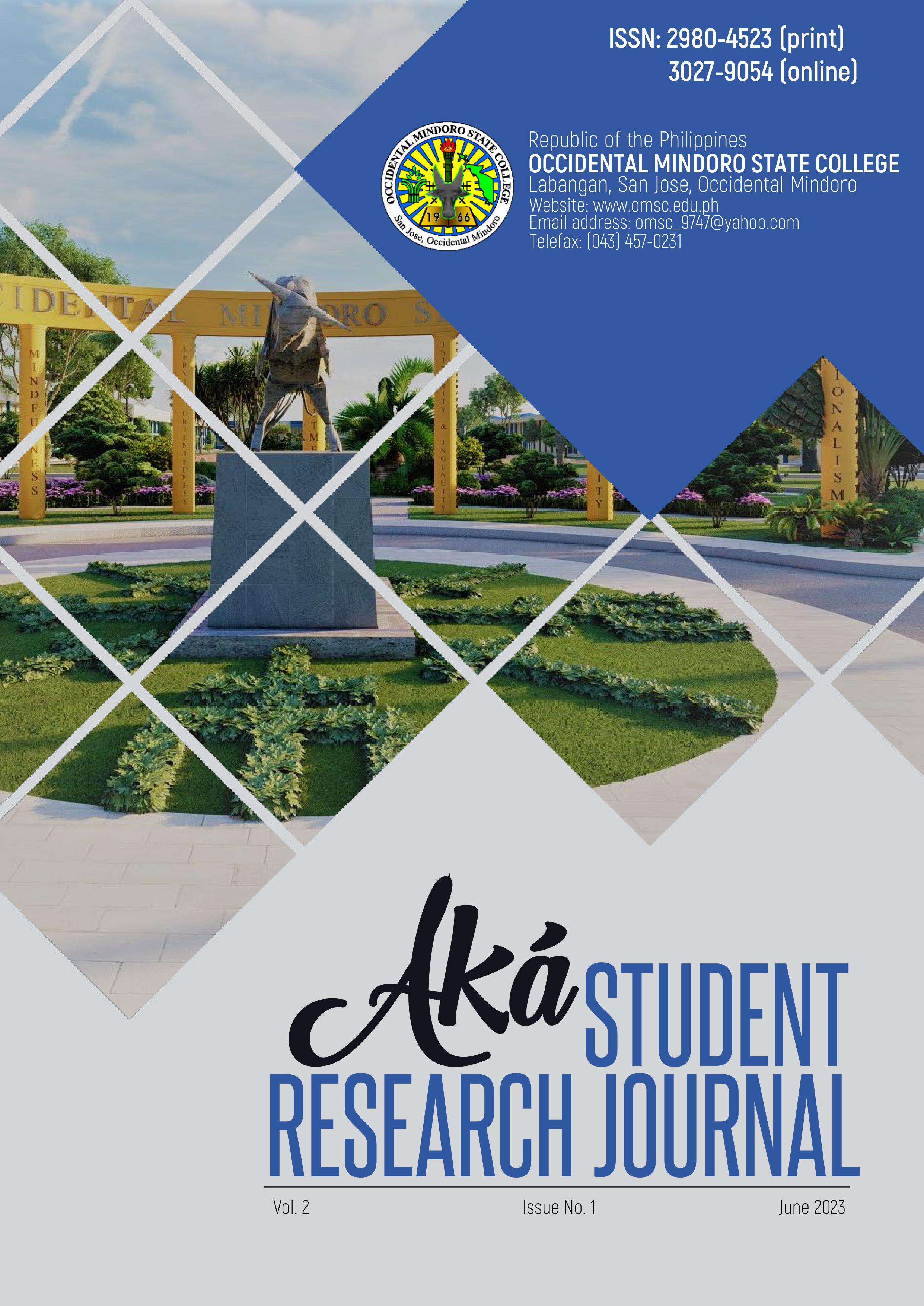Effectiveness of inventory management and productivity of Dapi-Mamburao Women Producers Cooperative
Keywords:
inventory management, productivity, cooperative organizations, organizational profitabilityAbstract
This research delves into the assessment of inventory management effectiveness and productivity at the DAPI-Mamburao Women Producers Cooperative, situated in Sitio Dapi, Barangay Payompon, Mamburao, Occidental Mindoro. A total of 25 respondents participated in this study, employing a descriptive-correlation research design to comprehensively evaluate inventory management and productivity. The research instrument, a self-constructed questionnaire, was meticulously validated by five experts and rigorously tested for reliability using Cronbach's Alpha. Employing a 4-Point Likert scale, the study utilized statistical tools such as Mean and Kendall Tau Correlation Coefficient for data analysis. The study findings unveiled that most of the respondents demonstrated high proficiency in inventory tracking, demand forecasting, lead time management, and controlling inventory costs. Furthermore, most respondents exhibited commendable performance in areas like employee development, income generation, and resource utilization. Crucially, the research uncovered significant relationships between the effectiveness of inventory management and the extent of productivity. In light of these findings, the study recommends that the DAPI-Mamburao Women Producers Cooperative diligently monitor and manage its inventory, ensuring consistent production for organizational profitability and productivity. Additionally, it is advised that producers actively participate in training and seminars organized by the Cooperative Development Authority to enhance their inventory management effectiveness and drive productivity to new heights.
References
Augustine, A.N., & Agu, O.A. (2013). Effect of Inventory Management on Organisational Effectiveness. Information and Knowledge Management, 3, 92-100. https://www.iiste.org/Journals/index.php/IKM/article/view/7190
Bin Syed, S. J. A. N., Mohamad, N. N. S., Rahman, N. A. A., & Suhaimi, R. D. S. R. (2016). A study on relationship between inventory management and company performance: A case study of textile chain store. Journal of Advanced Management Science, 4(4). http://www.joams.com/index.php?m=content&c=index&a=show&catid=53&id=279
Liu, W., & Liu, Y. (2022). The Impact of Incentives on Job Performance, Business Cycle, and Population Health in Emerging Economies. Frontiers in public health, 9, 778101. https://doi.org/10.3389/fpubh.2021.778101
Molinos-Senante, M., Maziotis, A., Sala-Garrido, R., & Mocholí-Arce, M. (2022). An investigation of productivity, profitability, and regulation in the Chilean water industry using stochastic frontier analysis. Decision Analytics Journal, 4, 100117. https://doi.org/10.1016/j.dajour.2022.100117
Munyao, R. M., Omulo, V. O., Mwithiga, M. W., & Chepkulei, B. (2015). Role of inventory management practices on performance of production department. A case of manufacturing firms. International Journal of Economics, Commerce and Management, 3(5), 1625-1656.
Oluwaseyi, J. A., Onifade, M. K., & Odeyinka, O. F. (2017). Evaluation of the role of inventory management in logistics chain of an organisation. Logi, 8(2), 1–11. https://doi.org/10.1515/logi-2017-0011
Relph, G., & Milner, C. (2016). Inventory management: Advanced Methods for Managing Inventory Within Business Systems. Kogan Page.
Sacchetti, S., & Tortia, E. (2020). Governing cooperatives in the context of individual motives. International Journal of Social Economics, 48(2), 181–203. https://doi.org/10.1108/ijse-09-2019-0579
Schreibfeder, J. (2017). Achieving effective inventory management. Effective Inventory Management, Inc.
Tan, F. Z., & Olaore, G. O. (2021). Effect of organizational learning and effectiveness on the operations, employees productivity and management performance. Vilakshan, 19(2), 110–127. https://doi.org/10.1108/xjm-09-2020-0122
World Bank (2019). World Development Indicators. https://databank.worldbank.org/source/world-development-indicators
Yunishafira, A. (2018). Determining the appropriate demand forecasting using time series method: Study case at garment industry in Indonesia. KnE Social Sciences. https://doi.org/10.18502/kss.v3i10.3156
Zhenjing, G., Chupradit, S., Ku, K. Y., Nassani, A. A., & Haffar, M. (2022). Impact of Employees' Workplace Environment on Employees' Performance: A Multi-Mediation Model. Frontiers in public health, 10, 890400. https://doi.org/10.3389/fpubh.2022.890400
Zygiaris, S., Hameed, Z., Alsubaie, M. A., & Rehman, S. U. (2022). Service quality and customer satisfaction in the post pandemic world: A study of Saudi auto care industry. Frontiers in Psychology, 13. https://doi.org/10.3389/fpsyg.2022.842141
Downloads
Published
Issue
Section
License
Copyright (c) 2023 Rosenda M. Linga, Johanns Andrie D. Mulingbayan, Mary Joy D. Pama, Jaryl M. Eugenio, Naida E. Gamez, Jennifer A. Almaida, John Bryan R. Arile, Shiela M. Villalobos, Marinell A. Tan, Judy A. Catalo (Author)

This work is licensed under a Creative Commons Attribution-NonCommercial 4.0 International License.


